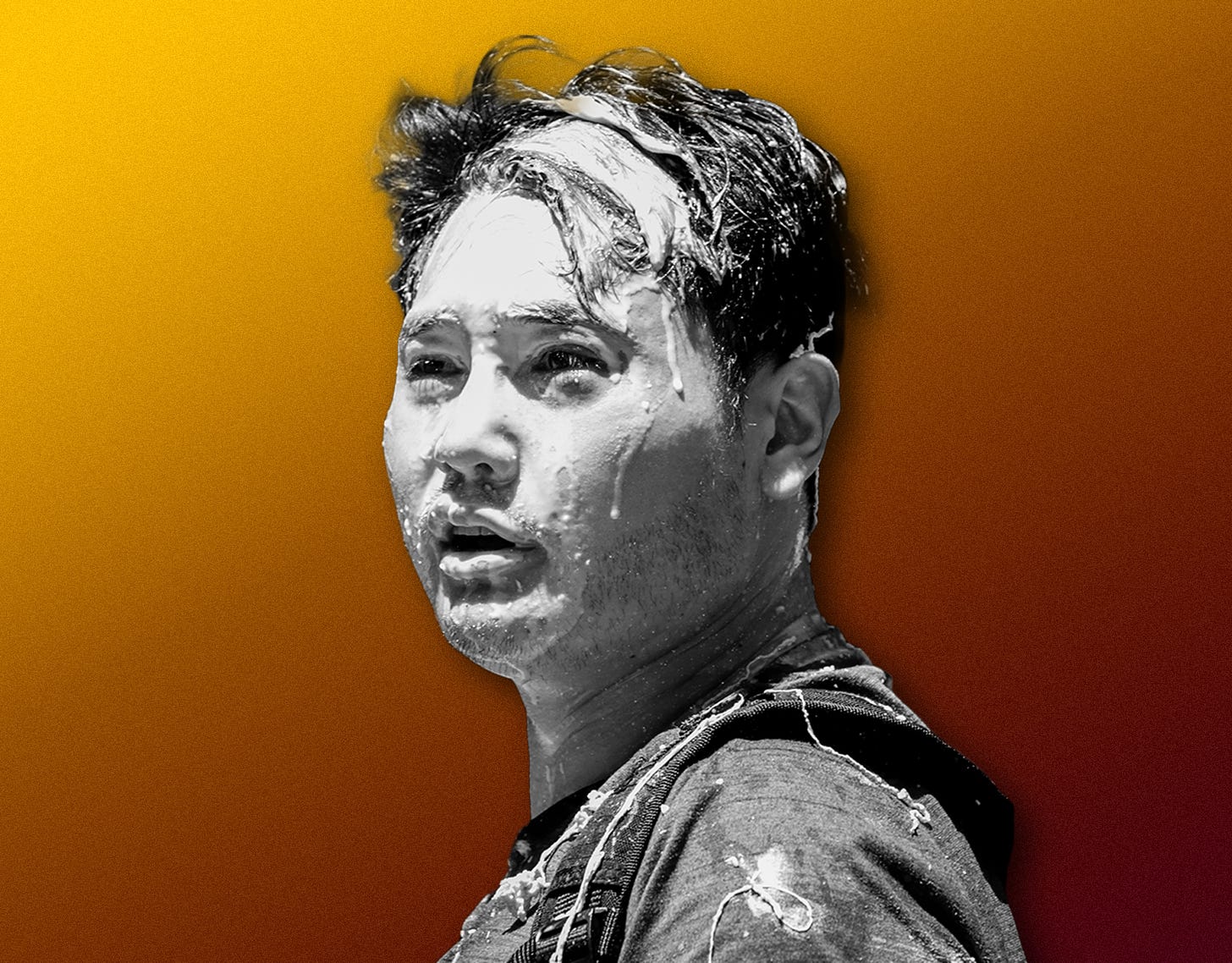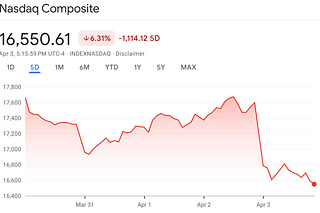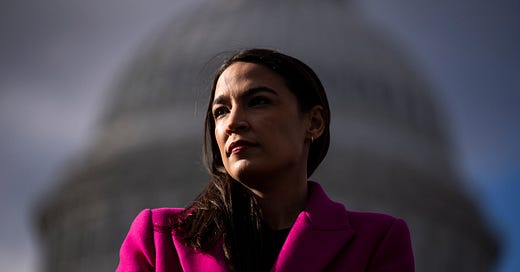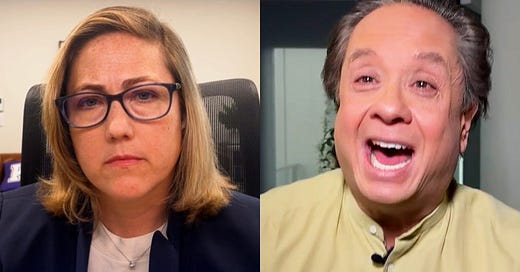
The Very Real Dangers of "Speech Equals Violence"
The assault on Andy Ngo shows we've reached a very bad place.

A couple of years ago, when Nazi-punching became a thing after preppy white nationalist Richard Spencer got sucker-punched in front of a camera in Washington, D.C., many warned that this was a dangerous trend for many reasons—not least because many left-wing activists define “Nazi” so broadly, the label could fit anyone to the right of Vladimir Lenin. And now we have seen a dramatic demonstration of exactly that: the on-camera mobbing and beating of independent journalist Andy Ngo by “anti-fascist” activists during a June 29 protest in Portland, Oregon.
Politicians from Republican House leader Kevin McCarthy to Democratic presidential frontrunner Joe Biden condemned the attack, CNN invited Ngo to talk about it on the air, and #AndyNgo and related hashtags still had hundreds of new tweets a week after the incident. The story has resonance because it taps into a range of ever-relevant current issues, from political violence (and its normalization) to media bias. Of course, like everything else today, it has also become grist for a lot of political hackery.
The event itself was pretty straightforward—and appalling. Ngo, a Portland-based independent journalist and Quillette editor who frequently covers the local looney left, was assaulted while covering a leftist protest against a rally by the Proud Boys, a far-right group. A video that quickly went viral showed him being doused with milkshakes, punched, and pelted with eggs.
A subsequent tweet by Ngo showed him bruised, with cuts on his face and blood on his neck; he said the attack left him with a brain hemorrhage. While Ngo’s detractors have pointed to his television appearances a couple of days later as evidence that the “brain bleeding” was made up, his slow, hesitant speech in the July 3 CNN interview seems clearly indicative of a head injury.
It should be shocking that Ngo would have detractors condemn him after he was the one violently assaulted in the course of his work as a journalist. Yet a depressing number of people on the left, including fairly prominent journalists and public figures, responded with “violence is bad but …” quasi-excuses, accusations that Ngo provoked the assault to boost his “grift” (a word rendered nearly meaningless by its wanton use to mean “paid punditry/activism I dislike”), or dismissive comments.
While Atlantic columnist Peter Beinart has claimed that such reactions were rare and blown out of proportion by the conservative media, there were plenty of examples beyond the widely cited tweets from Human Rights Campaign press secretary Charlotte Clymer and leftist keyboard warrior Nathan Bernard: Rolling Stone writer Dan O’Sullivan; former New America Foundation fellow Jonathan Katz; civil rights attorney Andrew Laufer; Bitch Media co-founder Andi Zeisler; Snopes.com managing editor Brooke Binkowski; Pacific Standard and NBC Think contributor Noah Berlatsky; video commentator and satirist Vic Berger IV; and quite a few more.*
Some of this was pure partisan douchebaggery, a thing that cuts across political lines. (How many people who chided Biden for being too slow to condemn the attack on Ngo got upset when Donald Trump praised Montana’s journalist-assaulting congressman Greg Gianforte last fall?) But the attempts to minimize or rationalize the attack also reflected more fundamental beliefs about the morality of violence. In a revealing comment, Slate staff writer Aymann Ismail asserted that Ngo’s writings, especially about radical Islam and about hate-crime hoaxes, “created an atmosphere of violence” and were “worse” than the attack on him.

This, in a nutshell, is the “speech as violence” view common on the modern progressive left: the idea that “hateful” speech causes tangible harm to “marginalized people,” both by inflicting psychic trauma when they are exposed to such speech and by encouraging bigotry and aggression. The application of this idea to Ngo is particularly disturbing, both because it justifies an actual, indisputably violent attack we have seen with our own eyes and because it shows just how broadly the definition of “bad” speech can be stretched.
Ngo, a rising star in the center-right media in the past couple of years, is certainly not beyond criticism. I have criticized him myself for a Wall Street Journal piece he wrote last fall on Muslims and multiculturalism in England that lapsed into hyperbole and error of fact (though I also thought the backlash against it was over the top). While he has done some excellent reporting on the culture wars in Portland, his criticism of bad elements on the right tends to be excessively mild—for instance, glossing over violence by the Proud Boys, a far-right group that frequently brawls with antifa and instigates many of these brawls. But there is precisely zero evidence that any of his work has instigated violence, and to call him a fascist or a Nazi is spectacularly absurd.
Aside from the equation of speech with violence, there is an undercurrent of sympathy for antifa as part of the anti-Trump “resistance.” Three days after the attack on Ngo, an “explainer” in the New York Times described “antifascist activists” as a “movement dedicated to confronting white supremacists and right-wing extremists, sometimes with violence.” Antifa-friendly Dartmouth College lecturer Mark Bray was quoted as saying that “militant anti-fascism is inherently self-defense.” The article briefly mentioned complaints about antifa trying to “shut down peaceful expression of conservative views,” but only to conclude that the real danger lay in a right-wing crackdown in response to left-wing militancy. New York University professor Ruth Ben-Ghiat lamented that “the left, or antifa, are … placed in impossible situations.”
But the most egregious pro-antifa plea was penned by Stanislav Vysotsky, assistant professor of sociology at the University of Wisconsin-Whitewater, for the left-wing Israeli newspaper Haaretz. Vysotsky called Ngo a “far-right journalistic provocateur” and asserted that “in the context of a broader dynamic between opposing social movements, the actions of militant anti-fascists are a form of self-defense.” The professor’s claim that many antifa activists react to being “directly targeted by fascist violence” as “queer, transgender, [or] gender non-conforming, people of color” was especially ironic, considering that the target of antifa violence in this case was a Vietnamese-American gay man.
This screed could be dismissed as one radical academic’s valentine to far-left violence. But it is noteworthy that on the same day his article appeared, Vysotsky was cited as an expert on antifa and right-wing extremism in two posts on the respected fact-checking website Snopes.com.
In fact, it’s abundantly clear that antifa violence is not limited to either self-defense or pushback against actual neo-Nazis and white supremacists. The recent political wars in Portland began in 2017, when anti-Trump protests turned to riots that prompted theOregonian—hardly a bastion of right-wing politics—to describe left-wing militants as “punk fascists.” That April, antifa militants threatened to disrupt a local parade held as part of Portland’s annual Rose Festival if organizers did not eject “Nazis”—i.e., Multnomah County Republicans, who had participated in the event since its inception a decade earlier. The threats ultimately forced the cancellation of the parade. This debacle spurred the rise of right-wing groups such as Patriot Prayer, whose members believe they are the ones acting in self-defense.
While things in Portland were heating up, across the continent in Middlebury, Vermont, a protest against a campus event with conservative intellectual Charles Murray turned into a riot when “antifascists” mobbed Murray on his way out, injuring a (liberal) female professor who was escorting him.
Such incidents are a feature, not a bug. Stifling speech deemed to be pro-fascist is at the core of antifa activism, as Washington Post critic Carlos Lozada noted in a review of Bray’s book ANTIFA!: The Anti-Fascist Handbook two years ago. The goal, as Lozada sums it up, is “to squash any incipient organizational efforts on behalf of white supremacy or class oppression.” Given how broadly “white supremacy” and especially “class oppression” can be defined, even centrists and moderate liberals could be on the target list.
Left-of-center commentators who have been critical of antifa violence in recent days, such as Vox’s Zack Beauchamp, have nonetheless tended to argue that such violence should not be a major concern. “A national focus on antifa can distract from the much greater problem of far-right extremism,” writes Beauchamp. He cites the Anti-Defamation League antifa primer, which condemns all violence but also warns against equivalency, noting:
Right-wing extremists have been one of the largest and most consistent sources of domestic terror incidents in the United States for many years; they have murdered hundreds of people in this country over the last ten years alone. To date, there have not been any known antifa-related murders.
But downplaying antifa violence is a very bad idea.
For one thing, extremist violence comes in many different forms. Far-right terrorism is indeed a major concern, especially after the horrific shooting at the Tree of Life synagogue in Pittsburgh last fall. (It is also worth noting that the ADL’s tally of extremist violence should be interpreted with caution: It includes many non-ideological crimes, often related to mental illness or family/personal conflicts, whose perpetrators have some links to extremism.) However, the escalation of everyday political conflicts into less lethal physical combat is a separate problem that poses distinct and very real dangers—particularly since the escalation will surely be mutual, and no one can predict how far it will go. A day after the Portland events, antifa activist and self-styled anarchist Kim Kelly penned a call for the left to arm itself with guns—an appeal that, in this context, sounded uncomfortably close to Jesse Kelly/Kurt Schlichter-style civil war fantasies. At some point, the political orientation of domestic terrorism could well shift to the left, where it was during the 1970s.
Perhaps the assault on Ngo will serve as a wake-up call.
To be sure, there are many on the right who have exploited this incident in irresponsible or cynical ways. Plenty of people pushed the story of antifa activists throwing milkshakes laced with liquid cement long after it was refuted. Donald Trump Jr. took a righteous stance for journalism and against violence in a piece for the Daily Caller. Turning Point USA’s Charlie Kirk claimed that Democratic presidential front-runner Joe Biden had once called antifa “a courageous group of Americans,” an assertion recycled by hundreds of Twitter accounts. (In fact, Biden was referring to protesters against the white supremacist rally in Charlottesville, Va., not all of whom were involved with antifa.)
There are many reasons to criticize the right. But this is a reckoning for the left, and an opportunity to rethink its Trump-era flirtation with militancy. One can only hope the opportunity won’t be missed.
Correction, July 9, 2019, 2:40 p.m.: The article originally and incorrectly referred to writer Dan O'Sullivan as an NYU journalism professor.











